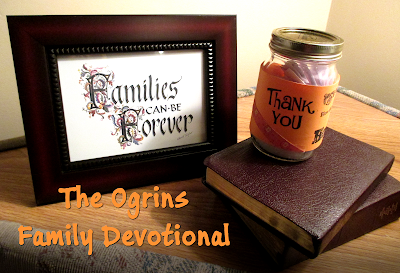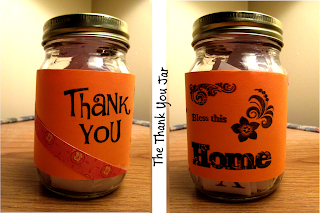I love goal setting! I regularly set goals throughout the year. Goal setting has become like keeping a journal for me. I have learned how to fully express my thoughts on paper – or, more accurately, a screen – so that I am able to see exactly what I want from myself, why it’s important to me, and how I’m going to do it.
And guess what? I’m going to teach you how I do this!
Good
I’ll start by showing you what I used to do. This is a sample of what many of my goals looked like from the time I was child until I started high school.
I would typically only set goals as New Year’s Resolutions. That’s a
good practice, but “everyone does it” and it usually doesn’t go very far.
As you can see from this list, the goals I chose are quite random in regards to topic of interest, difficulty/complexity, and time constraints. Some goals were
- meant to be accomplished far in the future (ie. not necessarily within that year),
- not entirely within my control (like getting married in the temple),
- too vague (what is required to get on the honor roll?), or
- too rigid (is it realistic to expect myself to exercise every single day?).
Often my interests would change drastically throughout the year and I would end up letting my eyes drift over some of the goals I made. Sometimes the goals I chose were too challenging and I’d give up on those too. (I was a bit too ambitious when it came to solving a Rubik’s cube and cup stacking in record time.)

Write a simple list of 3 or more goals you’d like to accomplish at some point in your life.
Better
Have you ever heard of SMART goals?
SMART goals are specific, measurable, attainable, relevant, and time-bound.
A goal must be
specific as to exactly what you are wanting to accomplish. For example, make a goal to “wake up at 6 a.m. every weekday,” rather than simply, “wake up earlier.” Write your goal as a complete sentence starting with “I will...” to give yourself a sense of accountability.
It must be
measurable, meaning you can keep track of your progress by a number, percentile grade, hours, etc. Another way to do this is to have sub-goals or smaller steps that can be accomplished one-by-one until the major goal can be completed. The following chart is an example of how you can keep track of your progress:
It must be
attainable for
you – not too hard, not too easy, not according to someone else’s standards.
It should be
relevant to your
current lifestyle and values. If it isn’t important to you
now, then you aren’t going to be motivated to work towards it.
And it must be
time-bound, ie. give yourself a due date!
Here is an example of a goal I made last year, ensuring I was following the SMART guidelines:
 |
| I also included how high of a priority this was (in comparison to other goals I had made at the same time), additional steps that would help me accomplish this goal, and who I was accountable to whether or not I was able to achieve it. |
This is a
better method for setting goals because it helps you to narrow the focus of your goal. It is a guideline to help you figure out what is necessary to consider if you aim to achieve your goal.

Take those 3 goals you listed above and flesh them out according to the SMART goals acronym.
Best
I took this further this year with my goal setting by (1) making my goals SMARTER and (2) writing down my thoughts and feelings.
This is an expansion on SMART goals: SMART-ER goals! Make your goals SMARTER by evaluating and reviewing them.
A goal can be
evaluated when completed or still in progress by assessing your goal’s “measurements” and determining how well you are doing at accomplishing it. For example, if you currently have an average of 75% in math, is this approaching your goal (if it was, say, 80%) or are you falling behind (95%)?
A goal should be
reviewed once the deadline has been reached, but can be reviewed sooner if needed. Ask yourself:
- Have I accomplished my goal to its fullest potential?
- Are there additional steps I didn’t consider beforehand?
- Are my measurements realistic for this kind of project?
- Is it too hard or too easy?
- Is this still relevant to me?
- Do I need to extend my deadline?
- Do I need some help from friends, family, coworkers, etc.?
Answering these questions will highlight the weak points of your goal or, at the least, just remind and encourage you to keep working towards it.
This is the
best way to set goals because it encourages progress – not only of yourself by continuing to set goals, but also of improving the effectiveness of your goals with the experience you will gain as you put these guidelines into practice.
The example you can see below is more of a demonstration of the –ER of SMARTER. I visit this document regularly, especially if I know I am not doing a good job of accomplishing one of my goals, to update the additional steps or add my feelings about a certain topic (inside the textboxes). I found that reading those textboxes helped to remind me of why I set those goals and motivates me to accomplish them for the right reasons: to make myself a better and happier person and to help others feel the same about themselves.
In case you were wondering, I also break down my goals into different categories from higher to lower priority. They are:
- Personal
- Spiritual
- Physical
- Mental
- Emotional
- Family
- Wife
- Mother
- Extended relations
- Home & Garden
- Community & Friends
- Education & Work
- Talents & Skills

Make sure to expand on your SMART goals by evaluating and reviewing them regularly and after you reach your goal’s deadline!
What method do you use when goal setting? How effective is it?
Next week’s topic: [
My Morning & Evening Routines]














!["Could this be the one?" [Credit: Couple Viewing/Dreaming/Buying Home by Mark Moz.] "Could this be the one?" [Credit: Couple Viewing/Dreaming/Buying Home by Mark Moz.]](https://blogger.googleusercontent.com/img/b/R29vZ2xl/AVvXsEhF2TtpckmR2d43wo_8pljN13HhZ7wjkAXu6IdQLRBnVDDtUVxu_GiXjJ7f0rhH51eOuQQsmTO2ChFvctzSrHgu6kAd4G6kwF7-EQfoMEw6172lpKg3fFpdHnkYMF5xO-vOO2rO9kvo0mnY/s320/viewinghome.jpg)
![A sample floor plan. [Credit: 1962 Georgia Pacific by Ethan.] A sample floor plan. [Credit: 1962 Georgia Pacific by Ethan.]](https://blogger.googleusercontent.com/img/b/R29vZ2xl/AVvXsEhpGrIef7Bfi69Y2bbWTpI7vmMC5OBaWGIwg8HxRh7-w9TlI5KTgUQ3wSGKI8TqrcZw4rhwkFuI0ZEHfsV7NWjaCt4iocrYk3kztJ-cpSrwDlrDPOfeVAx935MF-gIwNU-dNDQQlmVela0V/s400/floorplan.jpg)















